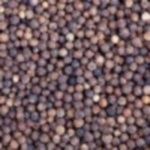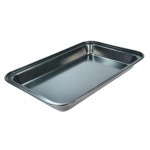- < Experiment 13
-
Experiment 14 v5
- Experiment 15 >
Learning the secrets of successful spice traders

Can you find out how many peppercorns are there in one cup?
Purpose
This experiment gives children an opportunity to appreciate the use of simple maths operations to solve daily problems.
The child will learn how to estimate volume, and a little history.
You need to know
- how to count accurately
- how to measure length using a ruler
- how to calculate the area of a rectangle
You will need




Steps
-
Would you believe that the black pepper once was so expensive that its worth is equivalent to its weight in gold?
During the time of the Spice Trade, the black pepper was so valuable that it was sold in local markets by pieces. On the other hand, traders bought their spices from the Spice Islands in South-East Asia mostly by volume or by weight.
If you were a spice trader back then, it would be important for you to know the number of peppercorns you are buying. However, if you are buying sacks and sacks of peppercorns you won't really be able to count them all.
In this experiment, you will find a way of counting large numbers of objects faster such in the case faced by Spice Traders.
- Prepare a cup of black peppercorns.
- Pour peppercorns onto your baking pan. Spread the peppercorns evenly.
- Use your ruler to measure the base of the baking tray.
- Count the number of peppercorns in a 5 cm x 5 cm square of the tray.
Hint
If you don't have enough peppercorns to cover the base of the pan, find a smaller container instead.
Questions
- How many peppercorns are there in one cup?
- What other uses can you find for the method you just used to count peppercorns?
Expected answers
-
The answers here may vary. What's necessary is how the number is achieved.
For example, suppose the total pan area is 500 cm2 and there were 100 peppercorns in the 5 cm x 5 cm square (i.e. in 25 cm2).
Then you can estimate the number of peppercorns in the tray as (500 / 25) * 100 = 2000.
-
This method of determining the number of peppercorns could also be used to estimate a lot of things such as counting the number of people attending a major concert or festival. Or estimating the number of trees found in a forest reserve. Microbiologists use this technique as well in estimating the number microbes in a Petri dish.
Explore further (optional)
When making popcorn, why not estimate how many corn kernels there are in a cup?
Tips for further exploration
This is another opportunity to use the same approach: measure a proportion accurately and then multiply it up.



